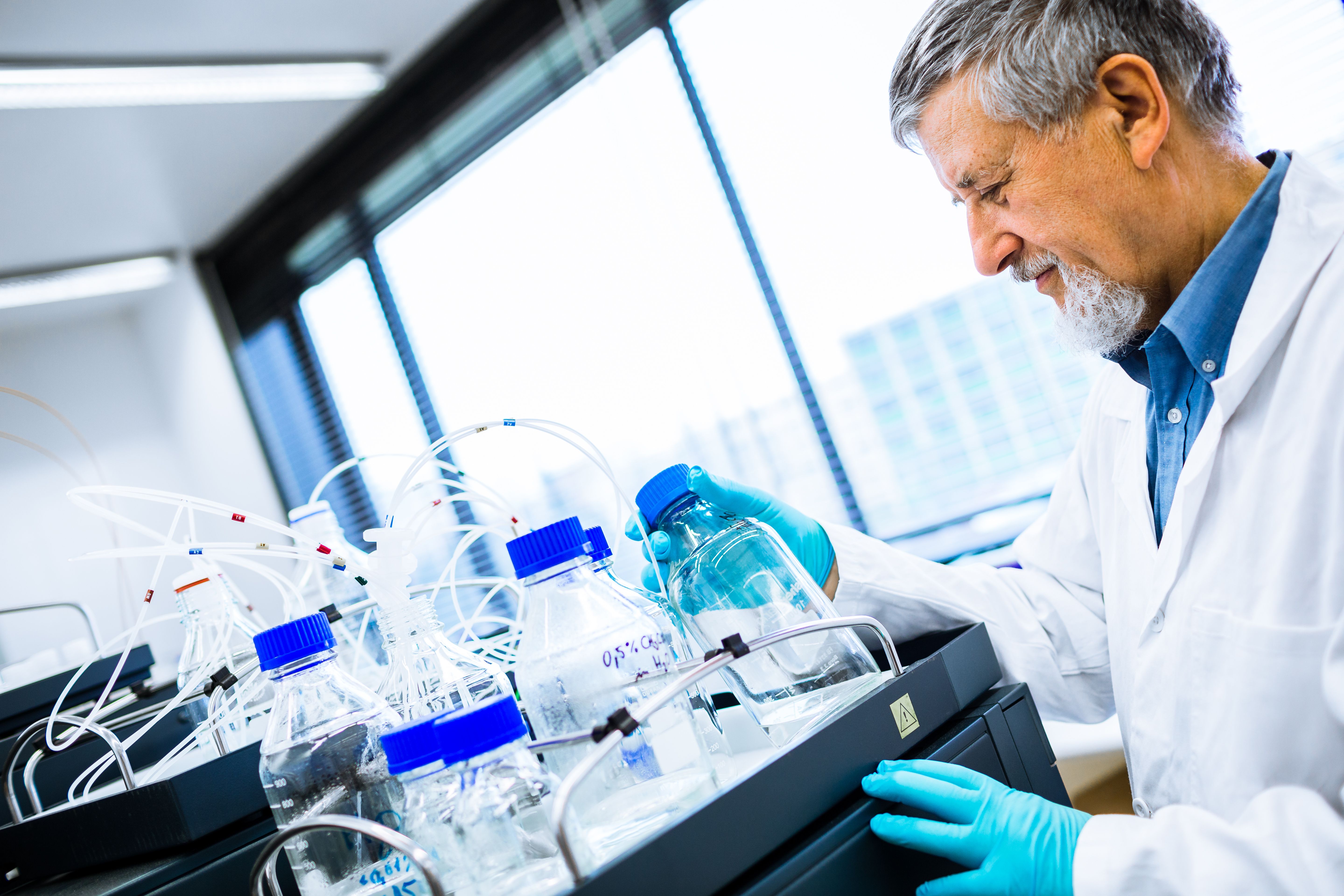Natural Deep Eutectic Solvents’ Potential in HPLC Mobile Phases
Scientists from Auburn University in Auburn, Alabama recently published a review article in the Journal of Pharmaceutical and Biomedical Analysis on natural deep eutectic solvents (NADES) and how these solvents can be incorporated into high-performance liquid chromatography (HPLC) mobile phases.
Senior male researcher carrying out scientific research in a lab | Image Credit: © lightpoet - stock.adobe.com

Separating natural products (NPs), while challenging, is necessary to increase knowledge about the complexity and diversity of metabolic processes, in addition to aiding in identifying and isolating bioactive natural compounds. NPs offer a vast number of potential new drug molecules, and they are often the framework of analogs made for more specific target binding and increase efficacy, safety, and delivery. Innovative chromatographic techniques are needed to help separate NPs.
Current separation techniques depend on volatile organic solvents (VOSs) to separate NP mixtures, which have acute oral, dermal, and inhalation toxicities, while also being ecotoxic. As such, there is need for alternatives to using VOSs due to potential chronic toxic encephalopathy that can arise after long-term exposure; this can display itself in changes to personality, emotional stability, ability to concentrate, or memory. Such changes would affect the approximately 9.8 million people that are occupationally exposed to VOSs. Furthermore, the annual amount of organic chemical waste produced globally by high-performance liquid chromatography (HPLC) users is approximately 52 million liters, which can further increase VOS exposure while experimenting and managing waste.
One potential replacement for VOSs are NADES. These are mixtures of naturally occurring eutectic substances, such as sugars, amino acids, and organic acids, that, at specific molar ratios of hydrogen bond accepting (HBA) and donating (HBD) components, are combined to yield the lowest melting point, or eutectic point (1). NADES have been described as cost-efficient and easy to produce, in addition to having low lethality and high ecological compatibility, both of which stem from components that are biosynthesized and metabolized by most living organisms. For this experiment, the scientists discussed the current knowledge on and major limitations of using NADES in an HPLC mobile phase, while proposing possible future research directions to widen how NADES can be applied in the mobile phase of HPLC systems. Furthermore, they also hoped to propose possible NADES that may be ready for use as HPLC mobile phases and which detectors they can be used with.
One of the major roadblocks that arise when using NADES as a HPLC mobile phase component is high viscosity, regardless of what detectors are employed. Additionally, the scientists did a comprehensive review of published literature to identify articles that focused on using NADES as extraction solvents for natural products, particularly polyphenols or reported NADES viscosities to establish a database of NADES which could be used as HPLC mobile phases under various conditions (1). In doing this, they identified other challenges that limit NADES application in HPLC mobile phases, including low volatility, NADES wavelength cutoff (UV and fluorescent detectors) and impurities. Though more research is required, the scientists hope that more developments can be made so that NADES can be integrated into more HPLC systems in the future.
Reference
(1) Heck, K. L.; Si, L.; Jung, D. J.; Calderón, A. I. Application of Eco-Friendly Natural Deep Eutectic Solvents (NADES) in HPLC for Separation of Complex Natural Products: Current Limitations and Future Directions. J. Pharm. Biomed. Anal. 2024, 244, 116102. DOI: https://doi.org/10.1016/j.jpba.2024.116102
Advances in Non-Targeted Analysis for PFAS in Environmental Matrices
March 27th 2025David Megson from Manchester Metropolitan University in Manchester, UK, spoke to LCGC International about the latest developments in non-targeted analysis (NTA) of per- and polyfluoroalkyl substances (PFAS) in environmental matrices based on a recent systematic review paper he has collaboratively published (1).
Study Explores Thin-Film Extraction of Biogenic Amines via HPLC-MS/MS
March 27th 2025Scientists from Tabriz University and the University of Tabriz explored cellulose acetate-UiO-66-COOH as an affordable coating sorbent for thin film extraction of biogenic amines from cheese and alcohol-free beverages using HPLC-MS/MS.








